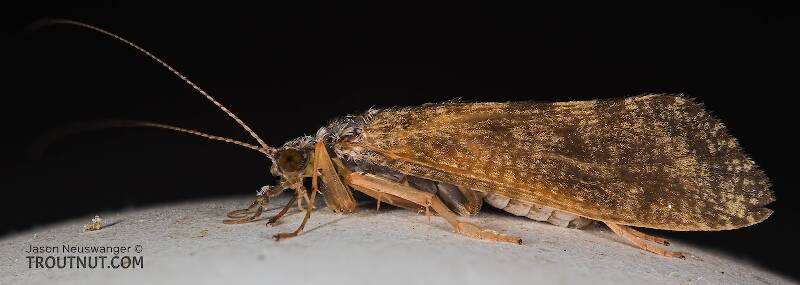
Blue-winged Olives
Baetis
Tiny Baetis mayflies are perhaps the most commonly encountered and imitated by anglers on all American trout streams due to their great abundance, widespread distribution, and trout-friendly emergence habits.


Mayfly Species Caudatella columbiella
Taxonomic History
Species Range
Identification
To determine whether a specimen of Caudatella belongs to Caudatella columbiella, use the Key to Species of Caudatella Nymphs.
Physical description
Most physical descriptions on Troutnut are direct or slightly edited quotes from the original scientific sources describing or updating the species, although there may be errors in copying them to this website. Such descriptions aren't always definitive, because species often turn out to be more variable than the original describers observed. In some cases, only a single specimen was described! However, they are useful starting points.
Nymph
Similar to Caudatella heterocaudata, but different in that Caudatella columbiella has paired medial spines on abdominal tergum 1, the other paired medial spines sharp at the tips, and cerci that are approximately one-sixth the length of the median filament, or about one-half the length of the abdomen.
Male Spinner
Similar to Caudatella heterocaudata, but different in that male adults of Caudatella columbiella (forewing length ca. 6 mm) are smaller than those of Caudatella heterocaudata (forewing length at least 7mm), and Caudatella columbiella male adults usually have abdominal maculation that is not as highly contrasted from the base coloration.
Male Spinner
Wing length: 7 mm
Eyes dark reddish brown. Thorax dark olive brown, the pronotum with considerable black shading. Median and lateral sutures of the mesonotum black-marked. A yellowish patch within which is a black line lies anterior to the wing base; the black line continues to the fore coxa. Mesosternum blackish brown with olive brown shading. Legs deep olive; fore femur and tibia tinged with black; fore tarsus about equal in length to the tibia, and both of these joints longer than the femur. Wings hyaline; longitudinal veins somewhat smoky, cross veins pale. Abdominal tergites olive brown; the first four tergites with broad black bands anteriorly, which bands are reduced to semicircular dorsal patches on the posterior tergites. A series of lateral black patches is also present, which tend to fuse with the dorsal bands on the anterior segments. Sternites pale olive; an irregular mid-ventral black band and similar black lateral bands. Forceps smoky, the third joint short. Penes united, forming an upcurved rod. (See fig. 156) Tails smoky, the middle one twice as long as the outer ones.
Nymph
Nymph with well-developed dorsal abdominal spines; head and thorax smooth; black abdominal markings as in the imago; middle tail much longer than the outer ones.
Head and thorax of nymph smooth. Legs rather short; femora somewhat flattened. Lateral extensions of the abdominal segments practically wanting, the postero-lateral spines not produced. Gills present on tergites 3-7. Dorsal spines prominent, strong; incurved, becoming progressively longer and further apart from tergite 2 to 7, but shorter and closer together on tergites 8-9. General color dark brown, the head blackish; legs without pale bands. Abdominal sternites with a mid-ventral reddish brown streak and on each side a lateral row of brownish dashes. Tails brownish, the joinings darker; middle tail almost three times the length of the outer ones.
Start a Discussion of Caudatella columbiella
References
- Jacobus, Luke M. 2010. Taxonomic Review of the Caudatella heterocaudata (McDunnough) and C. hystrix (Traver) Complexes (Insecta: Ephemeroptera: Ephemerellidae). Psyche: A Journal of Entomology 2010: 1-5.
- Needham, James G., Jay R. Traver, and Yin-Chi Hsu. 1935. The Biology of Mayflies. Comstock Publishing Company, Inc.
Mayfly Species Caudatella columbiella
Species Range
Resources
- NatureServe
- Global Biodiversity Information Facility
- Described by McDunnough (1935)

